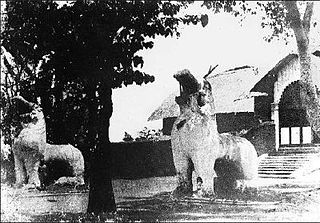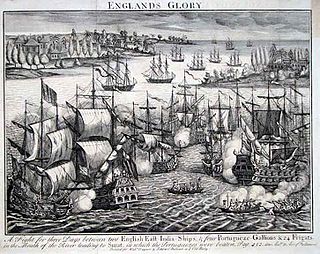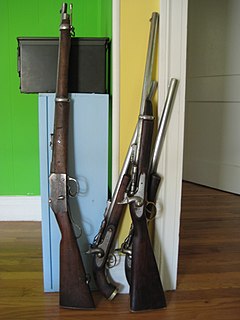 W
WThe 3rd Bengal Light Cavalry, also known as the 3rd Bengal Native Cavalry, was a locally recruited regiment of the East India Company's Bengal Army. Raised in 1797, the regiment took part in conflicts throughout British India, serving with distinction in the Second Anglo-Maratha War, the First Anglo-Afghan War and the First Anglo-Sikh War, earning various battle honours.
 W
WThe Anglo-Manipur War was an armed conflict between the British Empire and the Kingdom of Manipur. The war lasted between 31 March and 27 April 1891, ending in a British victory.
 W
WThe Anglo–Mysore Wars were a series of wars fought during the last three decades of the 18th century between the Kingdom of Mysore on the one hand, and the British East India Company, Maratha Empire and the Nizam of Hyderabad on the other. Hyder Ali and his successor Tipu Sultan fought a war on four fronts with the British attacking from the west, south and east, while the Nizam's forces attacked from the north. The fourth war resulted in the overthrow of the house of Hyder Ali and Tipu, and the dismantlement of Mysore to the benefit of the East India Company, which took control of much of the Indian subcontinent.
 W
WThe First Anglo-Sikh War was fought between the Sikh Empire and the British East India Company in 1845 and 1846 in and around the Ferozepur district of Punjab. It resulted in defeat and partial subjugation of the Sikh kingdom and cession of Jammu and Kashmir as a separate princely state under British suzerainty.
 W
WThe Second Anglo-Sikh War was a military conflict between the Sikh Empire and the British East India Company that that took place in 1848 and 1849. It resulted in the fall of the Sikh Empire, and the annexation of the Punjab and what subsequently became the North-West Frontier Province, by the East India Company.
 W
WThe siege of Arrah took place during the Indian Mutiny. It was the eight-day defence of a fortified outbuilding, occupied by a combination of 18 civilians and 50 members of the Bengal Military Police Battalion, against 2,500–3,000 mutinying Bengal Native Infantry sepoys from three regiments and an estimated 8,000 men from irregular forces commanded by Kunwar Singh, the local zamindar or chieftain who controlled the Jagdishpur estate.
 W
WAvantibai lodhi was an Indian freedom fighter and the queen of Ramgarh in Madhya Pradesh. An opponent of the British East India Company during the Indian Rebellion of 1857, information concerning her is sparse and mostly comes from folklore. Through this, she is claimed to have been a member of the Ksatriya Lodhi Rajput Community and has been used as an icon in Lodhi politics in the 21st century.
 W
WThe naval Battle of Swally, also known as Battle of Suvali, took place on 29–30 November 1612 off the coast of Suvali a village near the Surat city and was a victory for four English East India Company galleons over four Portuguese galleons and 26 barks.
 W
WThe Chief of the General Staff, India was a senior military commander in British India from 1906 to 1947, and in the independent Indian Army from 1947 until 1965.
 W
WDuring the period of the Company rule in India and the British Raj, the Commander-in-Chief, India was the supreme commander of the British Indian Army. The Commander-in-Chief and most of his staff were based at GHQ India, and liaised with the civilian Governor-General of India. Following the Partition of India in 1947 and the creation of the independent dominions of India and Pakistan, the post was abolished. It was briefly replaced by the position of Supreme Commander of India and Pakistan before the role was abolished in November 1948. Subsequently, the role of Commander-in-Chief was merged into the offices of the Commanders-in-Chief of the independent Indian Army and Pakistan Army, respectively, before becoming part of the office of the President of India from 1950 and of the President of Pakistan from 1956.
 W
WThe Coorg War was fought between the British East India Company and the State of Coorg in 1834. Defiance of the Raja of Coorg, a small state in South India, led to a short but bloody campaign in 1834. In February 1834, a force of 7000 was assembled under the command of Brigadier General Lindsay to commence operations against the Raja, who had begun hostilities against the British. Due to the poor state of roads, the force was divided into four columns, which were to enter Coorg from different directions and converge on the capital of Mercara. On 11 March, the Northern Division under the command of Colonel Gilbert Waugh entered the territory of Coorg and on 3 April, the leading troops made contact with the enemy. At noon, the advanced guard arrived in front of the fortified position of Soamwar Pettah. The force launched an attack on the position but was forced to retreat after a severe mauling. The leader of the Coorg resistance at was 'Madanta' (Mathanda) Appachu. Similar fate was suffered by another column.
 W
WThe Duhamel plan was a proposed Russian invasion of India during the Crimean War, a war in which Russia was fighting Britain, France and the Ottoman Empire. The plan was drawn up by General Alexander Osipovich Duhamel and proposed to Tsar Nicholas I in 1854. Duhamel proposed five alternative routes but his preference was to march through Persia and Afghanistan and invade British India through the Khyber Pass. The plan would have required the support of the Afghans and Persians.
 W
WThe First Anglo-Maratha War (1775–1782) was the first of three Anglo-Maratha Wars fought between the British East India Company and Maratha Empire in India. The war began with the Treaty of Surat and ended with the Treaty of Salbai. This conflict spread between Surat and Pune saw British defeat and restoration of positions of both the parties before the war. Warren Hastings, viceroy for India (Bengal) decided not to attack Pune directly.
 W
W"The Great Game" was a political and diplomatic confrontation that existed for most of the 19th century and beginning of the 20th century between the British Empire and the Russian Empire, over Afghanistan and neighbouring territories in Central and South Asia. It also had direct consequences in Persia and British India. Britain feared that Russia planned to invade India and that this was the goal of Russia's expansion in Central Asia, while Russia feared the expansion of British interests in Central Asia. As a result, there was a deep atmosphere of distrust and the talk of war between two of the major European empires. Britain made it a high priority to protect all the approaches to India, while Russia continued its conquest of Central Asia. Some historians of Russia have concluded that after 1801, Russia had minimal intentions or plans involving India and that it was mostly a matter of British suspicions although multiple 19th century invasion plans are attested including the Duhamel plan and Khrulev plan, among later plans that never materialized.
 W
WThe Imperial Gift was the donation of aircraft from British surplus stocks after the First World War to the Dominions: Canada, Australia, New Zealand, South Africa and the Empire of India. On 29 May 1919, the British Cabinet agreed to give 100 aircraft to each of these countries plus replacements for aircraft donated by these countries to Britain during the war. These aircraft formed the core of newly established air forces in several of the countries.
 W
WThe Jowaki Expedition was a British punitive expedition in India, occurring between 1877 and 1878. It started when the British government in India proposed to reduce the payment of the Jowaki Afridi tribe in the Northwest Frontier. The Jowaki were paid to guard in the Kohat Pass and in retaliation for a reduction in payment they raided British territory. The expedition ended in January 1878 when tensions died down.
 W
WThe Khrulev plan was a proposed Russian invasion of India during the Crimean War, in which Russia was fighting Britain, France and the Ottoman Empire. The plan was proposed in 1855 by General Stepan Khrulev and would have seen 30,000 Russian troops marching on the North-West Frontier via Persia and Afghanistan. The majority of the men would be recruited from Central Asian tribesmen, with a small reserve of regular Russian troops. The plan was not put into effect before the war ended in Russian defeat in 1856.
 W
WA Khyber Pass copy is a firearm manufactured by cottage gunsmiths in the Khyber Pass region between Pakistan and Afghanistan.
 W
WThe Battle of Koregaon was fought on 1 January 1818 between the British East India Company and the Peshwa faction of the Maratha Confederacy, at Koregaon Bhima.
 W
WThe siege of Lucknow was the prolonged defence of the Residency within the city of Lucknow during the Indian Rebellion of 1857. After two successive relief attempts had reached the city, the defenders and civilians were evacuated from the Residency, which was then abandoned.
 W
WThe British Indian Army Lushai Expedition of 1871 to 1872 was a punitive incursion under the command of Generals Brownlow and Bourchier. The objectives of the expedition were to rescue British subjects who had been captured by the Lushais in raids into Assam—including a six-year-old girl called Mary Winchester—and to convince the hill tribes of the region that they had nothing to gain and everything to lose by placing themselves in a hostile position towards the British Government.
 W
WMartial race was a designation which was created by army officials in British India after the Indian Rebellion of 1857, in which they classified each caste as belonging to one of two categories, the 'martial' caste and the 'non-martial' caste. The ostensible reason for this system of classification was the belief that a 'martial race' was typically brave and well-built for fighting, while the 'non-martial races' were those races which the British considered unfit for battle because of their sedentary lifestyles. However, the martial races were also considered politically subservient, intellectually inferior, lacking the initiative or leadership qualities to command large military formations. The British had a policy of recruiting the martial Indians from those who has less access to education as they were easier to control.
 W
WThe siege of Calcutta was a battle between the Bengal Subah and the British East India Company on 20 June 1756. The Nawab of Bengal, Siraj ud-Daulah, aimed to seize Calcutta to punish the Company for the unauthorised construction of fortifications at Fort William. Siraj ud-Daulah caught the Company unprepared and won a decisive victory.
 W
WThe Star of India refers to a group of flags used during the period of the British Raj in the Indian subcontinent. India had a range of flags for different purposes during its existence. The Princely states had their own flags which were to be flown alongside the British flag as a symbol of suzerainty. The official state flag for use on land was the Union Flag of the United Kingdom and it was this flag that was lowered on Independence Day in 1947. The flag of the governor-general of India was defaced with the Star of India. The civil ensign and naval ensign were the Red Ensign or Blue Ensign, respectively, defaced with the Star of India emblem.
 W
WAman ul-Mulk was the Mehtar of Chitral, Ghizer, Yasen and Ishkoman and Suzerain of Kafiristan. He ruled the State of Chitral from 1857 to 1892. His rule saw Chitral reach its territorial peak, extending from Ishkamun in Gilgit Agency to Asmar in Afghanistan. His death lead to the Siege of Chitral an instance of high drama, which goes down in the annals of British India as an epic of enormous courage and determination.
 W
WThe War in Vietnam, codenamed Operation Masterdom by the British, and also known as the Southern Resistance War by the Vietnamese, was a post–World War II armed conflict involving a largely British-Indian and French task force and Japanese troops from the Southern Expeditionary Army Group, versus the Vietnamese communist movement, the Viet Minh, for control of the southern half of the country, after the unconditional Japanese surrender.
 W
WThe Waziristan campaign 1919–1920 was a military campaign conducted in Waziristan by British and Indian forces against the fiercely independent tribesmen that inhabited this region. These operations were conducted in 1919–1920, following the unrest that arose in the aftermath of the Third Anglo-Afghan War.